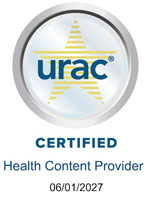An ovarian cyst is a fluid-filled sac that forms on or inside an ovary. The ovaries are a pair of small, oval-shaped organs in the lower part of a female's belly (abdomen). About once a month, one of the ovaries releases an egg. The ovaries also make the hormones estrogen and progesterone. These hormones are involved in pregnancy, the menstrual cycle, and breast growth.
Ovarian cysts are very common at all ages. But they are abnormal after reaching menopause. Young children can also get them, but this is less common. There are different types of ovarian cysts. They can occur for many reasons, and they may need different treatments. A cyst can vary in size from ½ inch to more than 4 inches.
Types of treatment
Treatment for an ovarian cyst will depend on the type of cyst, your age, and your general health. Most people won't need treatment. You may be told to watch your symptoms over time. An ovarian cyst will often go away with no treatment in a few weeks or months.
In some cases, you may need to have follow-up ultrasound tests. These are to check if your cyst has gone away or isn't growing. You may not need any other treatment.
If your ultrasound or blood tests show signs of cancer, your healthcare provider may advise surgery. This is done to remove part or all of your ovary. Your healthcare provider might also advise surgery if:
-
Your cyst causes ongoing pressure or pain
-
Your cyst appears to be growing
-
You have a very large cyst
-
You have endometriosis and want the cyst removed to help with fertility
Can an ovarian cyst be prevented?
If you have hormone problems, your healthcare provider may advise taking birth control pills. These may help prevent ovarian cysts. Taking antibiotics for a pelvic infection may also prevent a cyst.
Possible complications of an ovarian cyst
An ovarian cyst can sometimes break open (rupture) and bleed. This is called a hemorrhagic cyst. This may not cause any symptoms. Or it may cause sudden, sharp pain in the lower belly. A ruptured cyst can cause a lot of blood and fluid loss. This can lead to low blood pressure. In some cases, surgery may be needed.
Rarely an ovarian cyst can also cause twisting (torsion) of the ovary or even the fallopian tube. This can block normal blood supply to the ovary. This can lead to sudden pain and may need emergency surgery.
When to call the healthcare provider
Call your healthcare provider right away if you have any of these:
-
Sudden belly pain
-
Fever of 100.4°F (38°C) or higher, or as directed by your healthcare provider
-
Nausea and vomiting
-
Feeling lightheaded, short of breath, or very tired (fatigued)
-
Other severe symptoms
Featured in

